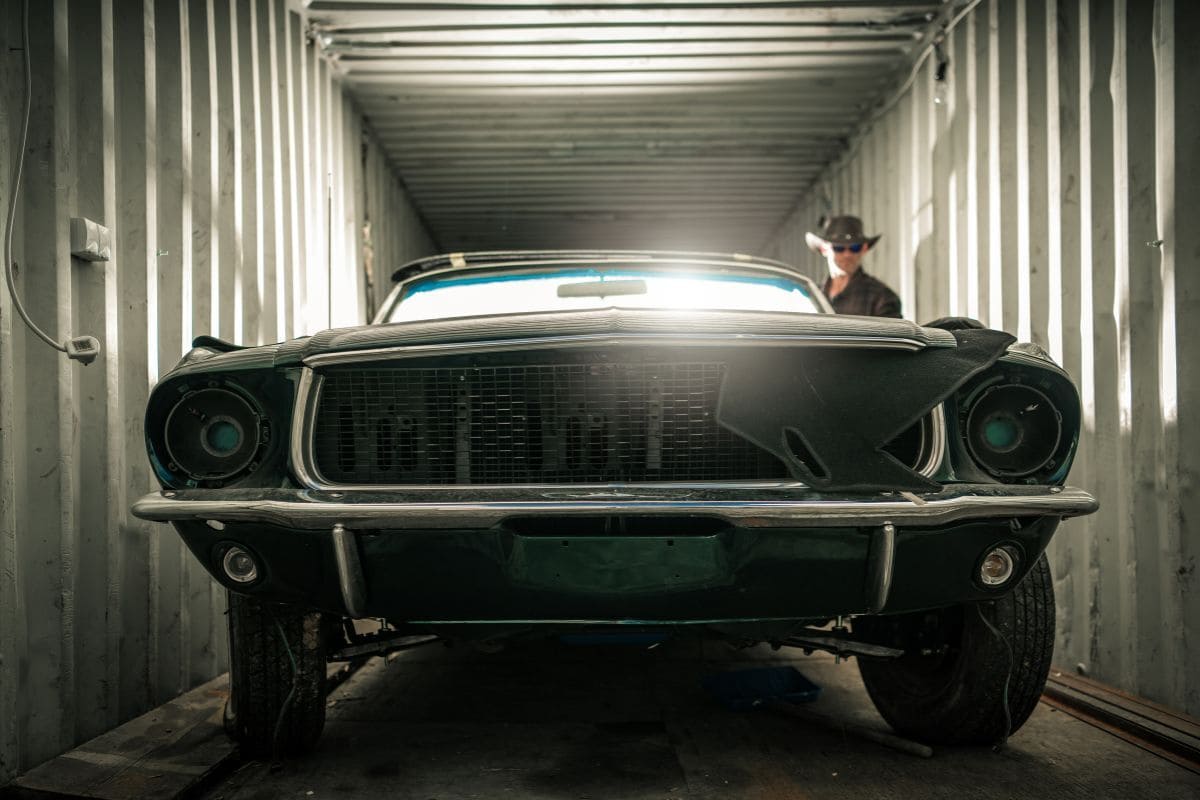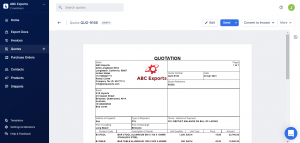Introduction to Car Container Shipping
Car container shipping is a popular way to move cars across the world. It uses large metal boxes, known as containers, to transport vehicles safely. This method is growing in use for several good reasons. First, it is safe. Cars are well-protected inside these containers. They are safe from weather, theft, and damage during the journey. Second, it is cost-effective.
Shipping multiple cars at once in a container can save money. Lastly, it is convenient. Containers can move seamlessly between road, rail or sea transport. This makes the whole process smoother. For these reasons, more and more people are choosing container shipping for cars.
Container Sizes and Their Capacities
Two main sizes of cargo containers are used in car shipping: 20 and 40 feet. These are the most common sizes used worldwide.
Here’s a quick look at their internal dimensions and weight limits:
- 20-foot container
- Inside length: 5.9 m (19.4 ft)
- Inside width: 2.35 m (7.7 ft)
- Inside height: 2.39 m (7.9 ft)
- Max gross weight: 30,480 kg (67,200 lbs)
- 40-foot container
- Inside length: 12.03 m (39.5 ft)
- Inside width: 2.35 m (7.7 ft)
- Inside height: 2.39 m (7.9 ft)
- Max gross weight: usually 30,480 kg, some up to 32,500 kg (71,650 lbs)
These limits are based on ISO 668 container standards, but can vary a little depending on the container manufacturer. Also read our guide on the difference between gross, net, and tare weight.
A 20-foot container usually fits one car, sometimes two small ones. A 40-footer can hold up to four standard-sized cars. If the cars are compact, you might fit more. Car size matters a lot. Bigger vehicles take more space. To fit more cars, special racks can be used. These racks help stack or angle cars to save space. The key is to use the container well. This helps move more cars in one shipment and lowers the cost per car.
Types of Vehicles and Container Compatibility
Different vehicles fit into containers in various ways. Regular cars and SUVs usually go well with both 20-foot and 40-foot containers. For luxury cars, extra care is needed. They often need more space and secure fitting. Bigger containers, like the 40-foot ones, are better for them.
Oversized or unusual vehicles can be tricky. Some vans, utes, or lifted trucks might not fit into a standard container. For these, special arrangements or a high-cube or open-top container may be needed. Motorcycles, ATVs, and even small boats can also be shipped in containers when packed properly. They take up less space and can often be shipped alongside other vehicles or gear.
The type of vehicle decides which container would be the best. It’s important to choose the right container. This ensures the vehicle is safe and the shipping is smooth.
The Logistics of Container Shipping, Loading Strategies and Safety Considerations
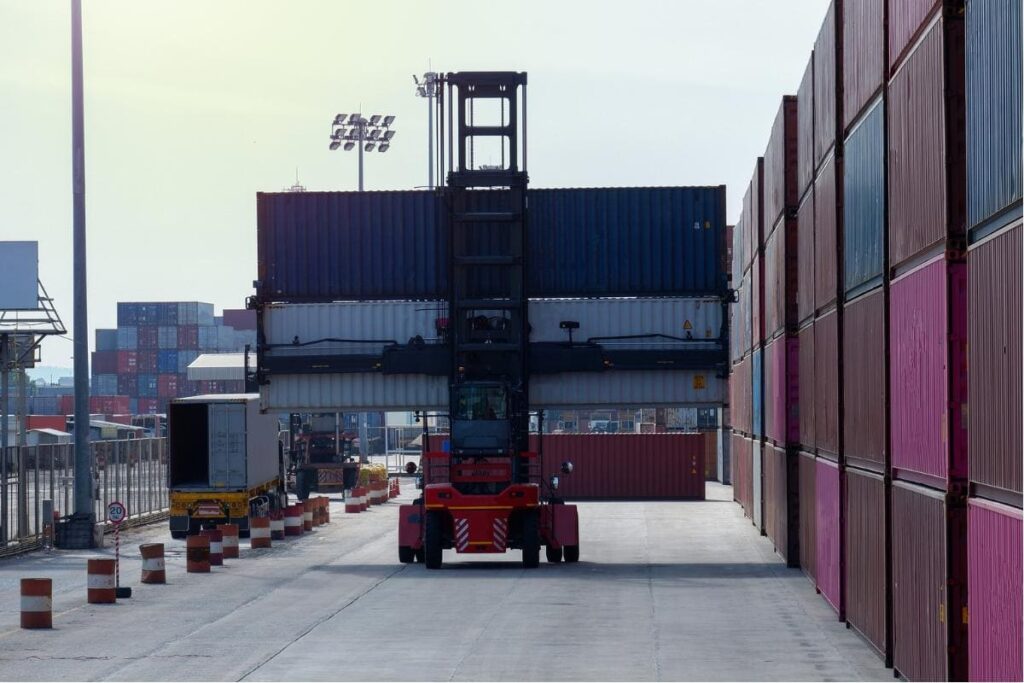
Loading cars into containers needs careful planning. The goal is to prevent damage during the trip. Here are the key steps involved in the process.
Prepare the Car
The first step is to prepare the car for shipping. This involves cleaning the car and removing all personal items from inside. Make sure the tank is less than a quarter full, and disconnect the battery if needed. It’s important to keep the car empty to stop anything from moving around during transit.
Take Pre-Shipping Photos
Before loading, take photos of the car from all angles. This gives you proof of the vehicle’s condition in case you need to file a claim later. It’s also useful to take more photos once the car is secured inside the container.
Use Ramps and Secure Ties
To load the car, ramps are used so the vehicle can be driven in smoothly. Once inside, the car must be tied down using strong ratchet straps or wheel chocks. Some shipments use steel racks, like the R-Rak system, to stack or raise vehicles safely inside. These help fit more cars in one container while keeping each car secure.
Balance the Weight
Placement inside the container is important. Cars should be spaced and balanced to evenly distribute weight. This keeps the container stable during road, rail, or sea transport.
Do a Final Safety Check
Once everything is in place, a final safety check is done. This makes sure all straps are tight and the vehicle is fully secure. It’s also a good time to confirm that nothing is loose inside the car or container.
Seal and Label the Container
After loading, the doors are closed and sealed using a unique container seal ID. This number is used for security and customs clearance. Labels are also added to show the destination and tracking details.
Transport the Container
Once sealed, the container is ready to move. It might travel by truck, train, or ship depending on where it’s headed. This flexibility is a big part of why container shipping is used so often.
Track the Shipment
Most freight companies provide a tracking number. This lets you follow your shipment through each stage of the journey.
Insurance and Freight Forwarding Support
Before you ship, make sure the vehicle is covered with transport insurance. This protects you from costs if the car is damaged during loading, unloading, or transit. The cost of insurance depends on the car’s value and the coverage level. Higher-value or rare cars may need more comprehensive policies.
It’s best to work with a freight forwarder or shipping agent who knows how car container shipping works. They can guide you through each step, from booking to customs paperwork. A good forwarder can also help with things like choosing the right container, loading safely, and securing the best insurance for your shipment.
Unload and Inspect the Vehicle
At the end of the trip, the container is opened and the cars are unloaded carefully. It’s best to use ramps or lifts to avoid any sharp movements. After unloading, check the car’s condition and compare it with the photos taken before and during loading.
Common challenges in this process include dealing with limited space within the container and securing different types of cars. These challenges can be addressed by using adjustable ties and carefully planning the layout of the cars within the container. This planning is key to maximizing space and ensuring the safety of all vehicles.
Single vs. Multiple Vehicle Shipping Options
When shipping cars, you can choose to send one car or more. Each choice has its benefits.
Single Vehicle Shipping: This is simple. A 20-foot container is often enough. It’s best for expensive or special cars. The cost is higher per car, but it offers more protection.
Multiple Vehicle Shipping: Here, 40-foot containers are used. They fit about four cars. This is cost-effective for standard cars. It’s good for dealers or for sending many vehicles to the same place.
Choosing the right container depends on a few things. Think about the car’s size, the cost, and where it’s going. For big or luxury cars, a bigger container or single shipping is better. For many regular cars, use a larger container to save money. The key is to match the container with the car’s needs and the shipping goal.
Choosing the Right Shipping Company
Selecting the right shipping company for car transport requires careful consideration of several specific factors. Based on insights from industry sources, here are key aspects to focus on:
Experience and Specialization: Look for a company with a proven track record in car container shipping. Companies experienced in handling both 20-foot and 40ft containers, and familiar with the logistics of different vehicle types, from standard cars to luxury vehicles, are preferable.
Cost Transparency: Evaluate the pricing structure of the company. It’s not just about the lowest cost but also about value for money. Ensure there are no hidden fees. Companies that offer detailed breakdowns of costs, including container size options and additional services, are often more reliable.
Customer Service Quality: Customer service is crucial. A company that provides clear communication, offers a tracking system for your shipment, and is responsive to inquiries indicates reliability. Positive customer testimonials and reviews can be a good indicator of service quality.
Insurance and Liability Coverage: Understanding the insurance and liability coverage offered by the freight company is vital. Ensure they provide comprehensive coverage for the types of vehicles you are shipping. Ask about their policies on damage during transit and the process for claims, if necessary.
Flexibility and Network: A company with a wide network can offer more shipping routes and options, which can be beneficial for international shipping. Flexibility in handling different types and sizes of vehicles, and the ability to offer solutions for unique or oversized vehicles, is also a sign of a competent freight company.
By focusing on these specific factors, you can make a more informed decision in choosing a freight company that aligns with your requirements for safely and efficiently transporting your vehicle.
Costs and Considerations in Container Shipping
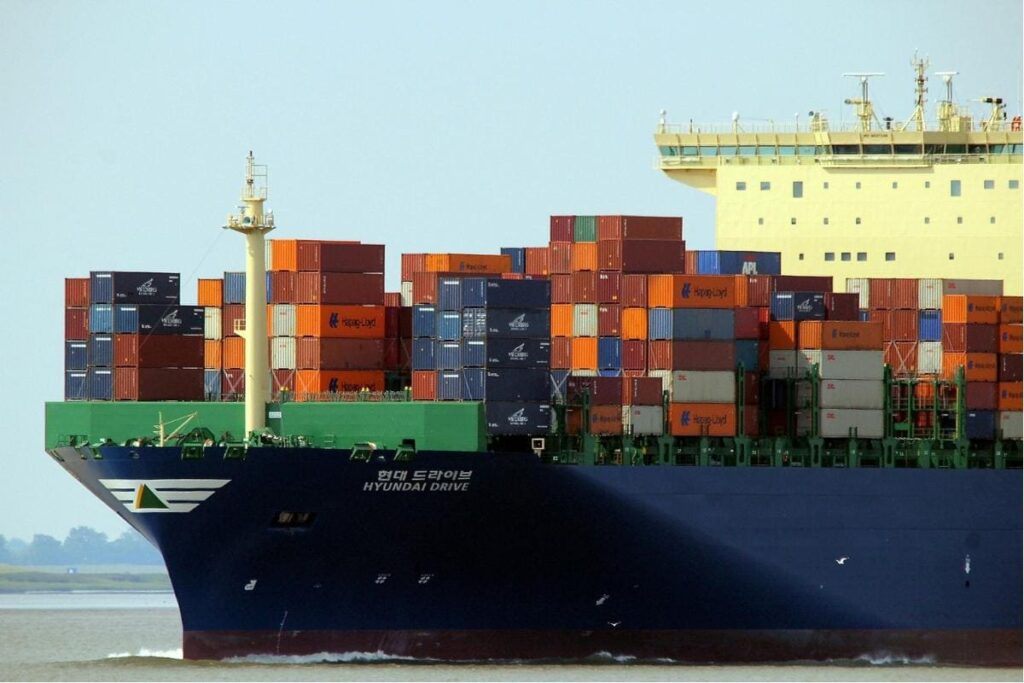
Transportation Cost in Container Shipping
In container shipping, the transportation cost is a major factor. It changes based on how far the container needs to travel. The distance of the journey plays a big role in determining the price. Also, the size of the container matters. Transport costs of a 20-foot container is less expensive than a 40-foot one, but a larger container can hold more cars, which will lower the average freight cost per vehicle. Note that there will be various costs incurred along the supply chain, from USD seafreight costs plus local port handling fees, customs clearance, documentation and trucking costs to final destination. Make sure that you understand how Incoterms® work, so that you understand which party will be charged for the various fees and charges along the supply chain.
Insurance Costs for Safety and Security
Insurance is a crucial part of shipping cars in containers. It protects your vehicle during the journey. The cost of insurance depends on how much your car is worth and the type of coverage you choose. More comprehensive insurance, covering a wide range of potential issues, will cost more. However, it provides better protection and peace of mind against scratches, damages or loss in transit.
Additional Fees in Container Shipping
There are many costs involved in shipping containers globally. These include fees for loading and unloading the cars, customs charges, import duties & taxes and sometimes storage fees. These fees vary based on the freight company and the destination requirements. They are additional to the main transportation cost and can vary greatly.
Import Duties and Taxes Payable
It’s important that you understand the applicable import duties and taxes that will be payable on the vehicles in the country of import. Import duties and taxes will vary depending on the country of origin, country of destination and type of vehicle to be imported. If the country of origin and country of destination have a free trade agreement in place, this can reduce or eliminate the value of the import duty when the shipper provides a Certificate of Origin document. Although import duty may be reduced, tax will still be payable at the destination country. In some countries, the taxes charges on importing vehicles can be quite high, so it’s imperative that you confirm applicable import duties and taxes payable with the freight agent before arranging your shipment.
Impact of Container Size on Cost
Choosing the right container size is important. A 20-foot container is cheaper but holds fewer cars. A 40-foot container costs more but can transport more vehicles. For shipping multiple cars, a larger container will be more cost effective as all of the shipping and logistics costs will be shared per vehicle.
Destination Factors Affecting Shipping Cost
The destination of the shipment greatly influences the cost. Shipping to major ports or places with good transport links is usually cheaper. Remote or hard-to-reach areas might have higher shipping costs. These costs are due to extra transportation and handling needed to reach these destinations.
Pros of Container Shipping:
- Provides a secure and protected environment for vehicles, safeguarding them against weather and theft.
- Offers the flexibility of shipping multiple vehicles simultaneously, which can be more cost-effective for bulk shipments.
Cons of Container Shipping:
- Can be costlier compared to other shipping methods, especially for individual car shipments.
- The process can be slower, as it involves careful loading, unloading, and often longer transit times.
After the Journey: Receiving Your Shipped Vehicle
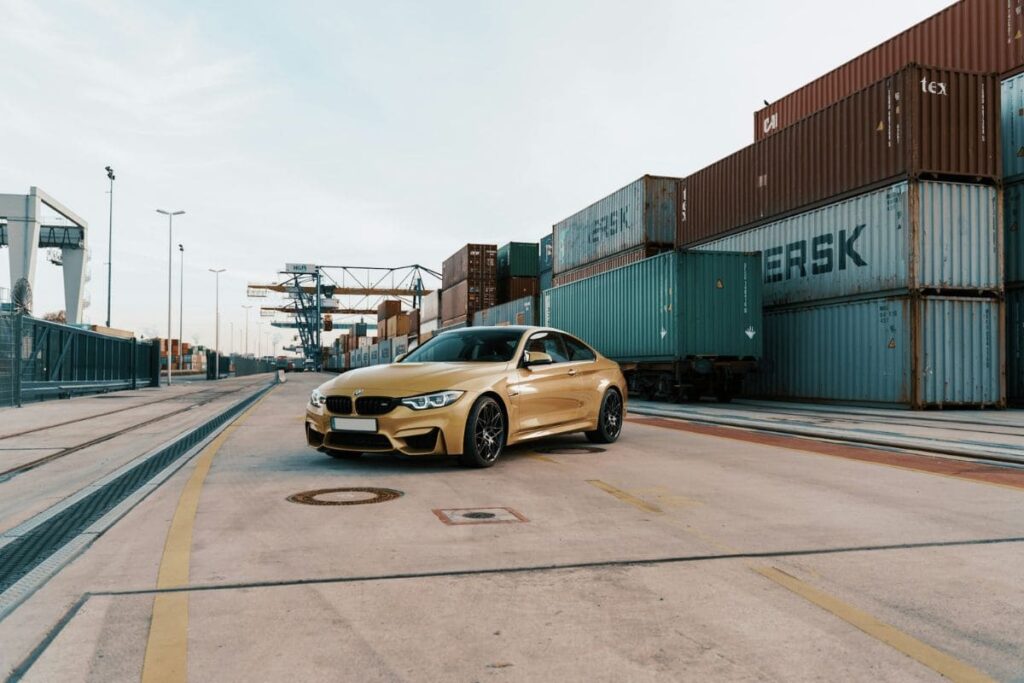
When your car arrives after shipping, there are important steps to follow. First, check the vehicle carefully. Look for any damage that might have happened during shipping. This includes checking both the inside and outside of the car.
Next, review all the documents. Make sure everything matches what you agreed upon. This includes checking the vehicle’s condition report. This report notes the state of your car when it was loaded.
If you find any damage, report it right away to the freight company you are dealing with. It’s important to do this as soon as possible to resolve any issues.
Finally, if everything looks good, you can sign off on the delivery. This confirms you’ve received the car and it’s in expected condition. If there are issues, don’t sign documentation until they are addressed. Remember, once you sign, it’s harder to claim for damages.
Conclusion: The Future of Car Container Shipping
The future of car container shipping looks bright and innovative. New technologies are changing vehicle freight. For example, better tracking systems are being developed. These will let customers see where their car is during shipping. This makes the process more transparent and reassuring.
As the global shipping process evolves, we will see more automated processes that will make shipping faster and more cost efficient.
Overall, car container shipping is adapting and growing. It’s becoming more advanced, customer-friendly, and environmentally conscious. This will make it an even better choice for transporting vehicles in the years to come.
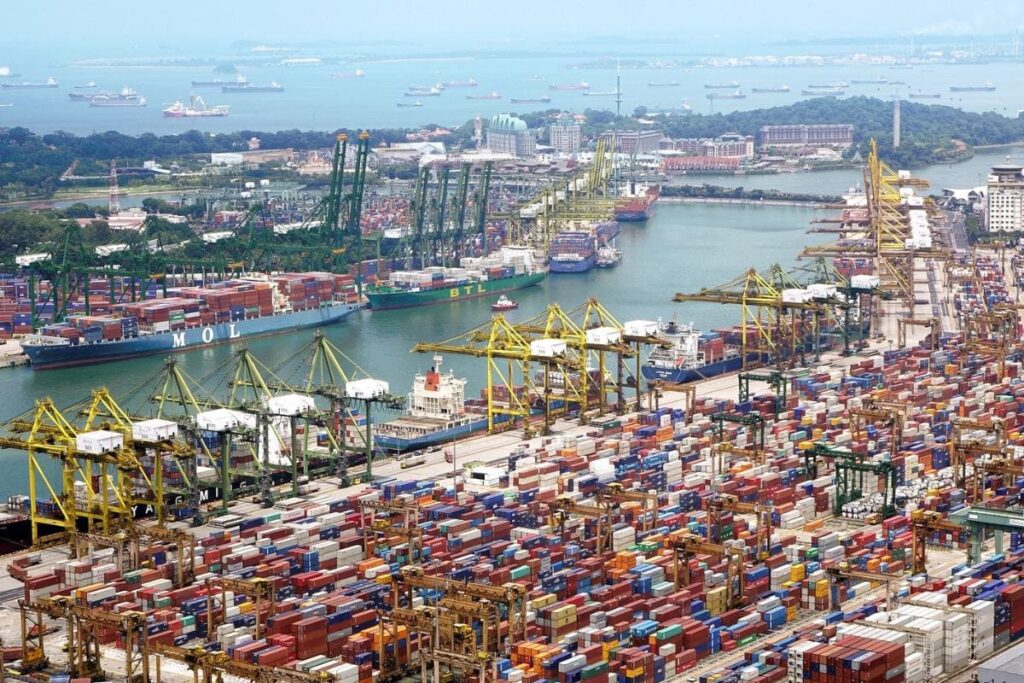
Frequently asked questions about Shipping cars in Containers
How many cars can you fit in a standard shipping container?
It depends on the size of the container and the size of the cars. Typically, a 20-foot container can transport one normal-sized car. It is essential to note that the packing and loading of the cars must be done properly to avoid any damages. Certain factors like the total weight of the cars, their height, and width also play a significant role. Furthermore, customized or oversized vehicles may reduce the number of cars that fit in a container.
What is the maximum number of cars that can fit in a 40 ft shipping container?
A standard 40-foot shipping container can fit up to four standard-size cars. However, 40′ containers usually accommodate up to three cars, depending on their loading and arrangement. The number depends on the dimensions of the vehicles and the exact container size.
Doing car shipping, should I use 20-foot or 40-foot container?
It depends on how many cars you need to transport. A 20 ft container can hold one standard car, while a 40-foot container can hold up to two to four cars depending on type of vehicle. Also, consider whether there will be any other items shipped with the car.
Will two trucks fit in a 40ft shipping container for overseas transport?
Depending on the size of the trucks, typically one to two small trucks may fit in a 40ft shipping container. It’s advised that you provide dimensions of the trucks to the shipping companies to accurately determine the number of trucks you can fit in one container.
Can I load and unload the cars myself when using a car shipping container?
Generally, shipping companies insist on doing the loading and unloading to ensure the safety of the vehicles and the container. They use special equipment to make sure no damage occurs during the loading and unloading process.
Does the type of car affect how many can fit in a standard shipping container?
Yes. Smaller cars like compact cars or certain types of sedans take up less space than larger cars such as SUVs or trucks, allowing for more vehicles to be transported in the same container size. The size and type of the container may limit the number of vehicles that can be transported at one time. The method of packing cars in a container can also impact the number of vehicles that can be transported at once. There are specialized steel racks that can safely secure multiple vehicles within a container. These systems maximize the available space and protect the cars during transit, allowing shippers to fit more cars in each container compared to other methods.
Are there specific regulations for how many cars can fit in a car shipping container?
There isn’t a specific regulation stating how many cars can fit in a shipping container, but there are rules and regulations related to safe and secure loading to prevent damage during transport. These rules will effectively limit the number of cars that can be loaded into a container.
